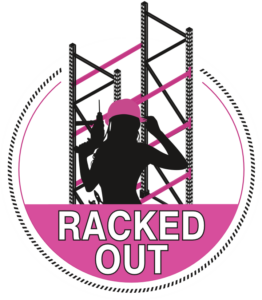Let’s call a spade a space: Some warehouses with roll-formed racking really should have structural racking. And some warehouses with structural racking really should have roll-formed racking. To prevent this from happening at your warehouse, today we’re going to highlight the differences between the two types of racking and explain their respective advantages and disadvantages.
Roll-formed racking

Roll-formed racking is stamped and cold rolled into standardized components that can hooked together, instead of using nuts and bolts for assembly. The majority of the roll-formed racking systems found within the Greater Toronto Area are a “Redirack style” profile. The frames are usually made from 13- or 14-gauge steel, and the beams are typically between 14 and 16 gauge. The shape and profile of roll-formed racking gives it more strength than you might expect from such light material.
Advantages of roll-formed racking
- Less expensive than structural racking because of its lighter gauge steel.
- Easy and quick to assemble and disassemble without needing nuts and bolts.
- Beam elevations are easily adjustable on uprights, allowing for customization and reconfiguration to accommodate changing storage needs.
- Use of lighter gauge steel can be an advantage if the racking needs to be moved or reconfigured frequently.
Disadvantages of roll-formed racking
- Not as robust as structural racking, making it more susceptible to impact damage from forklifts and other equipment and limiting its weight-carrying capacity.
Structural racking

Structural racking is made of hot-rolled structural steel. The frames and beams are generally made of C-channel (C3x3.5, C4x4.5) and structural L-angle. The beams are occasionally made of roll-formed material when cost is a deciding factor. The beams are bolted to the frames to ensure system rigidity.
Advantages of structural racking
- Built of heavier, more robust materials, it is designed to support heavier loads and can better withstand impacts from forklifts and other equipment without sustaining damage.
- Longer lifespan, which translates to a better return on investment. Roll-formed racking may have a life expectancy of 5-7 years, while structural racking could last up to 20 years.
Disadvantages of structural racking
Ordering requires a long lead time because the racking is manufactured to suit.
- More expensive due to its heavy-duty construction and use of high-strength steel components.
- More complex and time consuming to install because each beam and beam level is bolted together. Expensive skilled labor is required.
- Adjusting beam levels or replacing parts is more difficult, time consuming and expensive. Less flexible than roll-formed racking.
Use differences between roll-formed racking and structural racking
Roll-formed racking is typically used for medium-duty applications with lower volumes of pallet movement. It is also suitable for storing small or medium-sized items, like boxes, bins, and cartons. It is convenient for warehouses that need to store a wide variety of product sizes or where products change on a seasonal basis.
It is often used in settings where space is limited and cost is a factor. Retail and third-party logistics warehouses commonly use roll-formed racking.
Structural racking systems are best used where pallet movement volumes and actual weights are heavy and/or where the risk of impact from forklifts, trucks and other equipment is high. It is ideal for drive-in/drive-through warehouses where vehicles are regularly maneuvered in and out of narrow bays—situations where vehicles regularly collide with racking. Structural racking is common in food and beverage and cold-storage warehouses.
Contact

If your warehousing racking system is not ideal for your circumstances or you are setting up a new warehouse, click here to contact the pallet racking pros at Racked Out. We have a comprehensive line of products and services and, based on our years of experience, will give you honest advice.